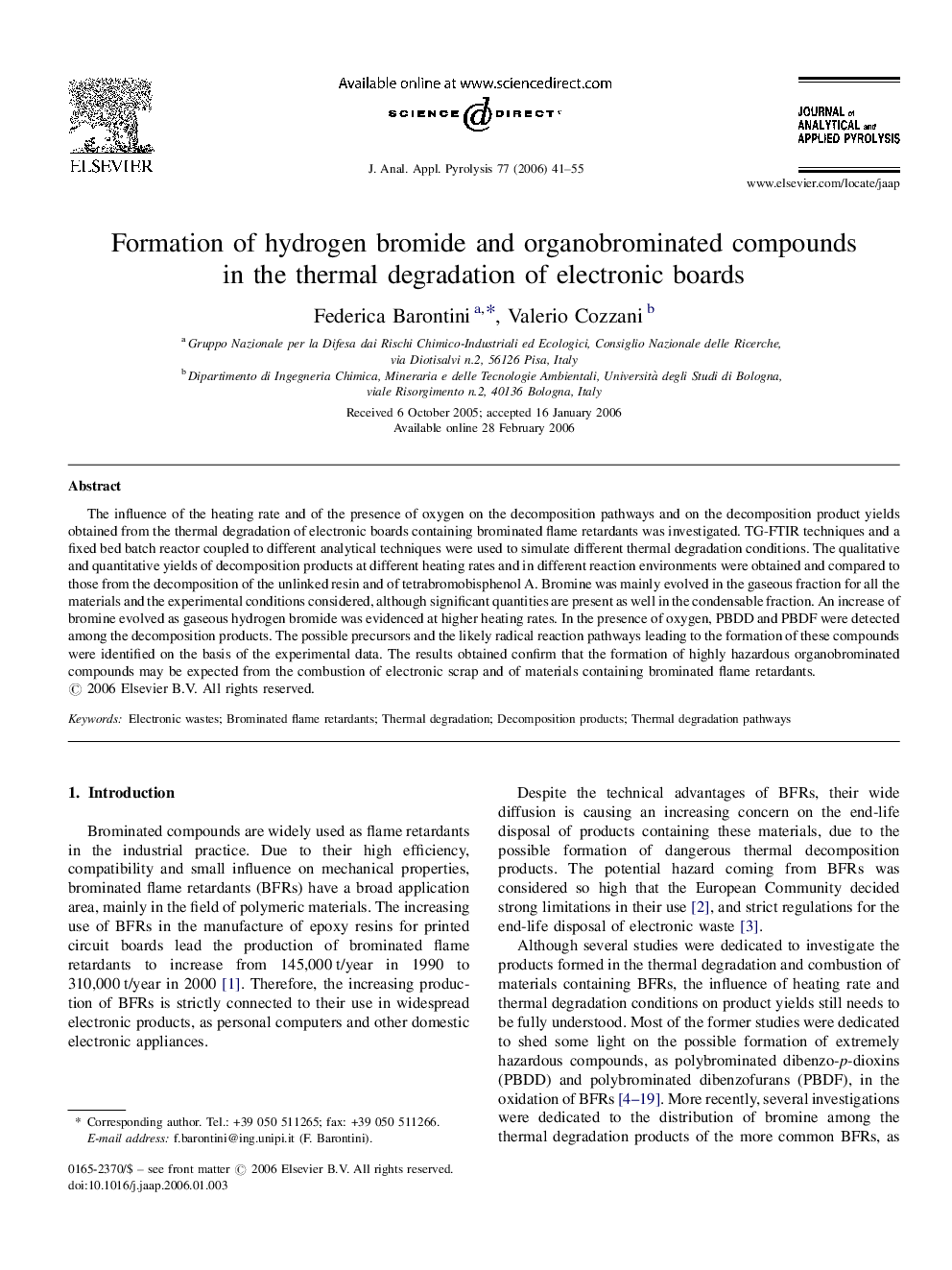| Article ID | Journal | Published Year | Pages | File Type |
|---|---|---|---|---|
| 1198183 | Journal of Analytical and Applied Pyrolysis | 2006 | 15 Pages |
The influence of the heating rate and of the presence of oxygen on the decomposition pathways and on the decomposition product yields obtained from the thermal degradation of electronic boards containing brominated flame retardants was investigated. TG-FTIR techniques and a fixed bed batch reactor coupled to different analytical techniques were used to simulate different thermal degradation conditions. The qualitative and quantitative yields of decomposition products at different heating rates and in different reaction environments were obtained and compared to those from the decomposition of the unlinked resin and of tetrabromobisphenol A. Bromine was mainly evolved in the gaseous fraction for all the materials and the experimental conditions considered, although significant quantities are present as well in the condensable fraction. An increase of bromine evolved as gaseous hydrogen bromide was evidenced at higher heating rates. In the presence of oxygen, PBDD and PBDF were detected among the decomposition products. The possible precursors and the likely radical reaction pathways leading to the formation of these compounds were identified on the basis of the experimental data. The results obtained confirm that the formation of highly hazardous organobrominated compounds may be expected from the combustion of electronic scrap and of materials containing brominated flame retardants.
